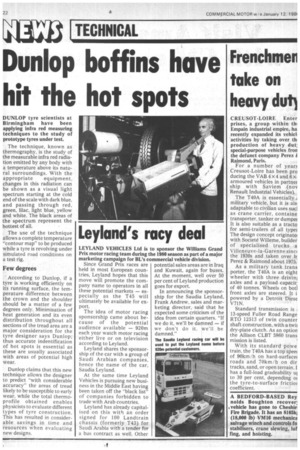Dunlop boffins have hit the hot spots
Page 24

If you've noticed an error in this article please click here to report it so we can fix it.
DUNLOP tyre scientists at Birmingham have been applying infra red measuring techniques to the study of prototype tyres under test.
The technique, known as thermography, is the study of the measurable infra red radiation emitted by any body with a temperature above its natural surroundings. With the appropriate equipment, changes in this radiation can be shown as a visual light spectrum starting at the cold end of the scale with dark blue, and passing through red, green, lilac, light blue, yellow and white. The black areas of the spectrum represent the hottest of all.
The use of the technique allows a complete temperature "contour map" to be produced while a tyre is revolving under simulated road conditions on a test rig.
Few degrees
According to Dunlop, if a tyre is working efficiently on its running surface, the temperature difference between the crown and the shoulder should be a matter of a few degrees only. Minimisation of heat generation and its even distribution throughout all sections of the tread area are a major consideration for the tyre designer says Dunlop; thus accurate indentification of hot spots is essential as these are usually associated with areas of potential high wear.
Dunlop claims that this new technique allows the designer to predict "with considerable accuracy" the areas of tread likely to be susceptible to early wear. while the total thermoprofile obtained enables physicists to evaluate different types of tyre construction. This has resulted in considerable savings in time and resources when evaluating new designs.












































































































